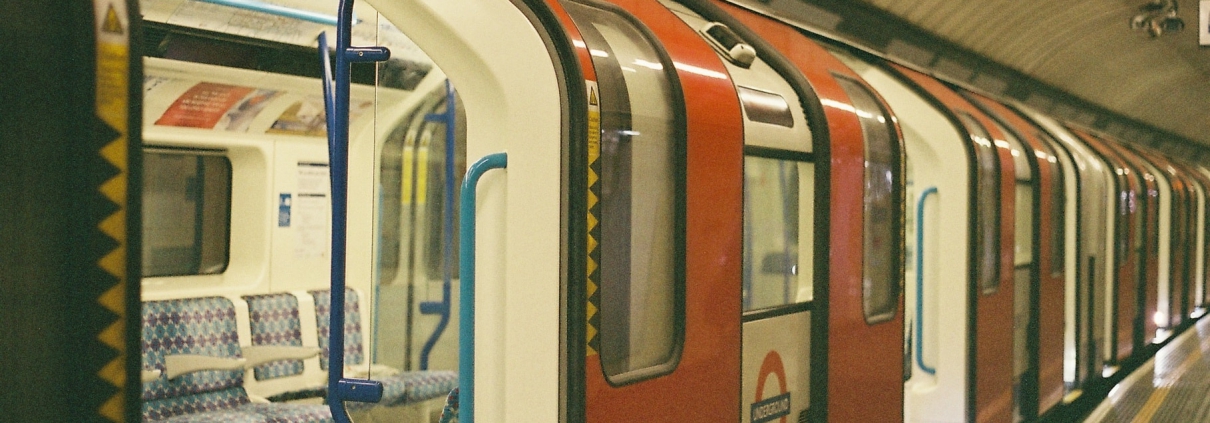Comparing Transit Strikes: London’s Ongoing Railway Dispute and New York City’s Subway Standstills
This being my first time out of the country, I was certainly nervous to travel through London. Looking at a map of the Underground was overwhelming to say the least. Each line is spread out across the city in a rainbow of colours like a woven spider web where I would eventually lose my sense of direction and get lost in the endless network of train tracks.
But upon using the Tube for only a few days, I found it to be much less complex than I previously thought. With the help of CityMapper, the railways were quite easy to navigate. Once I had spent a few days exploring, I felt confident enough to plan a trip outside the city. I was thinking of going to Scotland.
Something I never could have expected, though, was getting notified by my train booking to Edinburgh that I should expect train services to be affected by planned strikes. Upon further research I found that members of both the National Union of Rail, Maritime and Transport and the Aslef Union have been in dispute with the rail industry over pay, pensions and working conditions.
While the recent Tube rail strikes have since been called off, the RMT union is still planning a strike on Saturday, July 29 that will cause widespread disruptions to National Rail services. According to an article by The Independent, the National Rail disputes are over union workers not receiving pay raises that match increasing inflation.
According to the Office for National Statistics, “the Consumer Prices Index (CPI) rose by 8.7% in the 12 months to May 2023.” However, recent news shows that inflation has hit a year low as “inflation slowed to 7.9% in June.”
This is not the first occurrence of railway strikes, but one instance of a long-standing dispute with the railway industry. Strikes in March occurred for the same reasons.
Transit strikes, particularly Tube strikes, appear to be an almost expected occurrence in London. The transit industry is seen as one the city’s most “strike prone industries”, and disagreements between TfL and the workers unions continue to remain unresolved.
As someone from the U.S., I am unfamiliar with experiencing public transit strikes, let alone strikes of any kind. New York City is the largest city in the U.S. and contains the largest transit network nationally as well. Public transit strikes in the ‘Big Apple’ are far and few, only tracking back to three instances in 1966, 1980 and 2005 when the railway system was shut down due to labour disputes.
In 1966, the Transit Workers Union strike shut down the city’s subway system for 13 days. Workers demanded a wage increase, shorter hours and contract improvements. Because four to five million people used public transportation at the time, the city’s infrastructure was heavily burdened as the government attempted to minimise the strike’s effect.
As a direct result, New York instituted the Taylor Law in 1967, denying public employees the right to strike.
In 1980, 33,000 transit workers went on strike for 11 days because of a lack of wage increase, again testing the resourcefulness of the city. While entrepreneurial businesses thrived, the strike was estimated to have cost “$75 million to $100 million in lost income for workers and companies — and $3 million a day in overtime and lost taxes for the city,” according to the New York Times article. Due to the Taylor Law, the striking workers were fined $1,250,000.
By 2005, “over 7,500,000 million riders” depended on buses and subways. The TWU, the same union involved in the past two strikes, walked out illegally for three days because the union rejected the Metropolitan Transit Authority’s increase of retirement age and demand for increased pay towards worker pensions.
In 2006, TWU President and leader of the 2005 transit strike Roger Toussaint was sentenced to 10 days in jail for the unlawful strike. The union was also fined millions of dollars.
These three events put the U.S.’s most populated city to a standstill, prompting government officials to scramble to accommodate the needs of commuters. But in the end, every union worker was participating in illegal action after the introduction of the Taylor Law.
Now let’s take a look back at London, where transit strikes are happening yearly and for extended periods of time. The frequency of these strikes may be in part due to the legal freedom for workers to participate in “industrial action.” As long as the strike is formally backed by a trade union, union members are taking part in it, and a legal process is taken to make the strike official, workers are protected against being dismissed.
The ability for public employees to participate in such action is not shared by the city lying just across the Atlantic, which may contribute to the elusiveness of such walkouts. While the Taylor Law is only specific to New York, the striking of public sector employees is illegal in 38 other states.
Both the U.K.’s and the U.S.’s largest cities have constructed two different legal boundaries for public sector railway workers that has undoubtedly influenced the very landscape around public transportation.
While there have been significantly less rail strikes in New York City, the very act was outlawed and would lead to immense fiscal damages for unions. Therefore, these strikes have become much less frequent, and therefore much more significant. Whereas in London, the frequent strikes pose a disruption to the five million passenger journeys that the Tube accommodates a day. However, public employees having the ability to defy regulations and wages that they deem unjust can act as a symbol of freedom for the working class to protest unjust working conditions.
By Jack Underhill, You Press Intern





